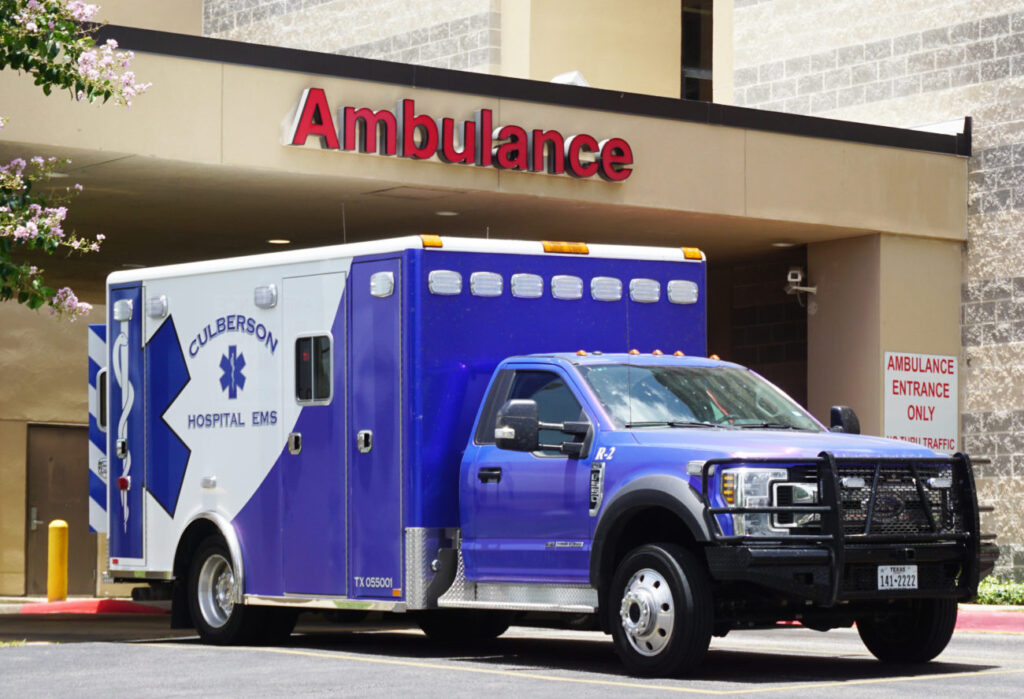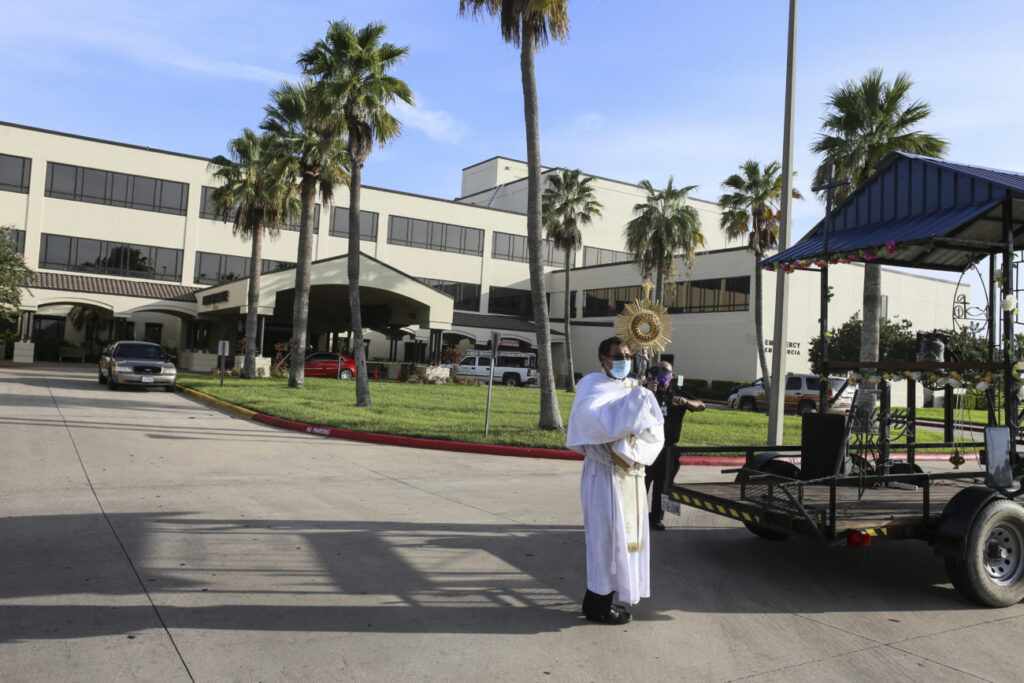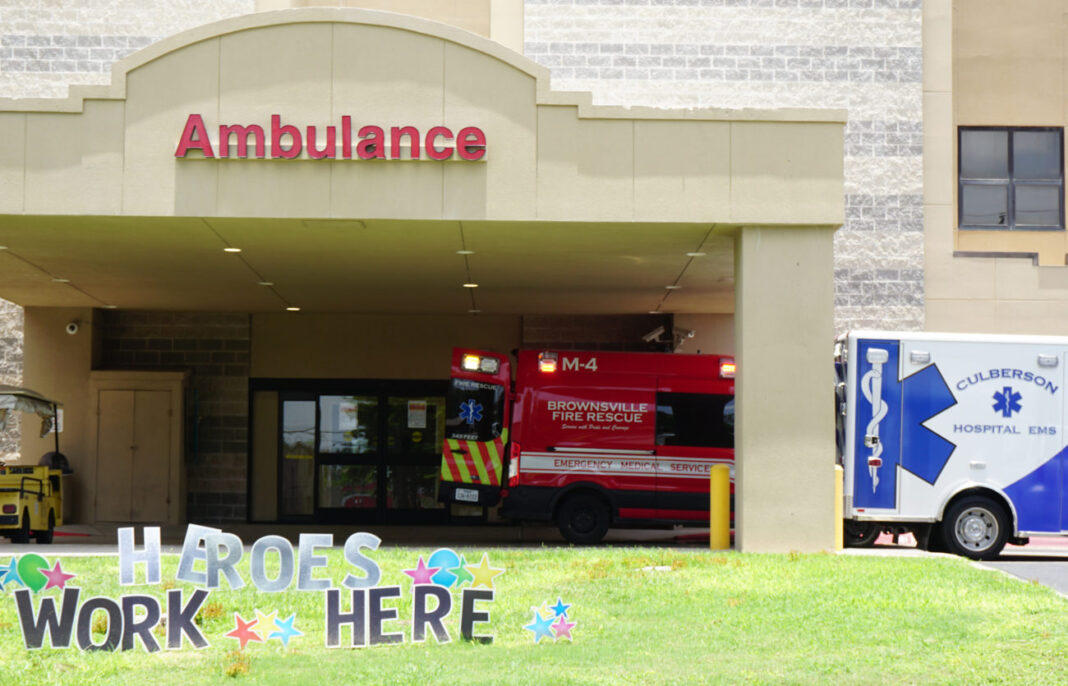As hospitals across Texas again fill up with COVID-19 patients sick with the delta variant to the point that Gov. Greg Abbott is asking for help from out-of-state healthcare personnel and requesting that hospitals postpone elective medical procedures, Cameron County healthcare workers say they’re stretched thinner now than even during last summer’s massive COVID surge.
Abbott, whose order banning local mask mandates is meeting with push-back from local and school district officials from around the state, including Cameron County, announced the emergency mitigation measures on Aug. 9, the same day Melanie Garcia, an emergency room charge nurse at Valley Baptist Medical Center-Harlingen, spoke at a county press conference.
“All of our hospitals are short staffed,” she said.
Garcia noted that VBMC’s nurse-to-patient ratio is the lowest it’s been in years, which makes it tough to adequately care for patients. A year ago when the Valley was the nation’s number-one COVID hotspot, healthcare personnel from around the state were dispatched to the Valley to help out, and local hospital staff were able to work three or four days a week, she said. Today, however, most local hospital staff members are working five and six days a week, 12 hours per shift, every minute of it spent at the hospital, Garcia said.
“You can’t just clock out at 7 o’clock,” she said.
Garcia said she remembers vividly last summer when the hospital ran out of ventilators and oxygen for COVID patients streaming into the ER in dire need of both.
“There was not enough beds and there was not enough oxygen for patients who really, really needed them,” she said. “We do not want to get back to that point. Ask anyone who worked in a hospital what it was like last July. That is just not something that we want to see happen again.”
But cases are surging again. Cameron County has seen 3,769 new cases and 38 more deaths since June 28, bringing the total since the start of the pandemic to 45,887 and 1,723, respectively.

“Today the majority of people that come in with COVID or COVID-like symptoms are usually under the age of 40 years old and unvaccinated individuals,” Garcia said. “They come in pleading for the lives, telling us we did not think that the virus is real. … Most of those individuals need oxygen to breathe. They are struggling. It’s just been really, really rough for healthcare workers across the nation and across the Valley and everywhere else.”
Valley Baptist Health System President and CEO Manny Vela, also speaking at the press conference, called Garcia and her colleagues “front line heroes” and said COVID patients accounted of 30% of VBMC-Harlingen census as of Aug. 9. Of those 93 patients, most were in ICU and more than 95 percent of them were unvaccinated, he said.
“The very few that had been vaccinated did not need ICU care at all,” Vela said, adding that VBMC is “again at a crisis point” due to a reduction in core staffing in the face of the latest COVID surge.
VBMC-Brownsville reported Aug. 10 that its COVID patients census had nearly tripled since July 13.
Art Garza, CEO of Valley Regional Medical Center, said at the Aug. 9 press conference that the number of COVID patients at his hospital on a daily basis fluctuates between 10 and 30, though on that day VRMC had 20 COVID patients.

“Out of those 20 patients half of them are in ICU, and out of those patient that are in ICU all of them are on some type of ventilator or oxygen assistance mechanism,” he said. “All of them, 100 percent of them, are not vaccinated. That’s important to note. … The numbers tell us across the nation that if you do get the vaccine then you’re less likely to get the virus, and if you do get the virus the impact is far less than if you’re not vaccinated.”
During last year’s summer surge the average age of patients in ICU was “way north of 60,” while today the average age of patients in ICU on ventilators is just over 45, Garza said. VRMC admits about five patients a day with COVID, the vast majority of them unvaccinated, he said.
Frank Avecedo, VRMC chief nursing officer, also spoke at the press conference, pleading with unvaccinated members of the community to get the vaccine.
“We now have the tool that we need to combat this disease,” he said. “It’s not perfect but it gives you a fighting chance. If we don’t maximize that tool that is available — for free — we exponentially impact our community, taxing resources that are already limited in all the hospitals across the nation.”
People who refuse to receive the vaccine or wear a mask and get sick are putting needless pressure on hospitals and making it nearly impossible for them to care for victims of heart attacks, strokes and other “high acuity” conditions, Avecedo said.
“Those resources will not be available, and that’s a very real situation today,” he said. “My plea today is for the community to please listen. Heed our warnings. We do have something in our arsenal this time around to fight against COVID. As a front-line nurse, we need help from the community.”




